Transforming the Education Workforce Report
It takes a team to educate a child.
Transforming the Education Workforce: Learning Teams for a Learning Generation offers new visions for strengthening, diversifying, and reimagining an education workforce that can deliver inclusive, quality education for all. The workforce is an education system’s biggest investment and one of its greatest levers for change. This new report draws on existing evidence and innovations from education and other sectors to rethink the education workforce needed for the future. It puts forward approaches for addressing immediate needs while also creating collaborative teams and systems that respond to our rapidly changing world to equip our young people with the skills they need for the future.
Explore the Report
Despite progress in some areas, there is a serious risk the world will not achieve inclusive, quality education by 2030 as set out by Sustainable Development Goal 4 (SDG 4). There are still more than 260 million children out of school and more than 600 million who are in school aren’t learning. The Education Commission estimated that on current trends, even by 2030, more than 800 million children will not be on track to achieve basic secondary level skills.
Most experts now agree that making further and faster progress will require deeper reforms of education systems. While education systems face varying obstacles depending on their stage of development and context, common characteristics have been identified in top performing education systems. The key strategies they use to improve student outcomes center around developing a quality teacher workforce. Teachers are at the heart of the learning process and developing an effective teacher workforce is crucial. However, other roles and relationships, such as school leadership and management roles, have also been found to be strongly associated with better educational outcomes. In addition, support roles have been critical in helping reach those left behind, and district and state roles are important in using results to drive strategic investment and system change.
Defining the education workforce
This report takes a holistic understanding of the education workforce and follows the lead of other sectors, such as early childhood development, which defines its primary workers more broadly. In this report, the term education workforce will be used to describe teachers and all persons who work directly to support the provision of education to students in education systems.
This includes people working across all functions relevant for providing education: leadership and management, teaching and learning, student welfare, operations, and administration. The education workforce includes both compensated and volunteer roles and even communities and families when directly involved in formal education processes with schools.
A range of factors affects the slow and stalled progress on education goals, but much of it is driven by education workforce challenges. These can be categorized broadly into three core issues: the supply and distribution of trained and qualified teachers; the effectiveness of teachers and other members of the workforce in ensuring quality and inclusive education; and the ability of the workforce to keep pace with change. Although these challenges affect many types of education systems, they vary significantly in degree and substance depending on the specific context and stage of a system’s development. Not every country will face all these issues – each education system will have a unique set of challenges it must diagnose to move forward.
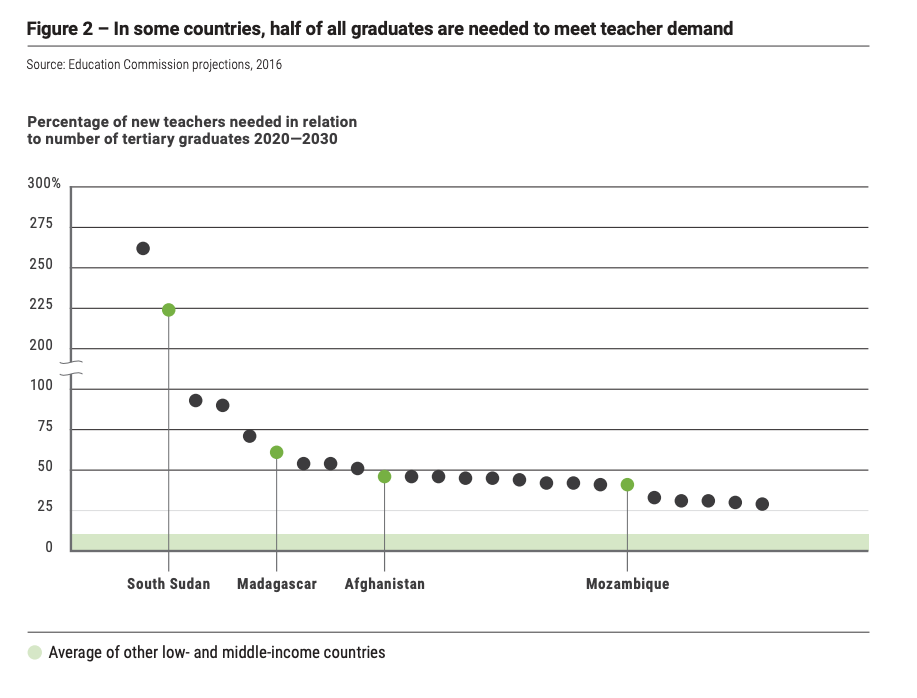
The report’s vision for an education workforce able to deliver on SDG 4 includes three interacting stages:
- Strengthening the education workforce- immediate incremental change to address the most pressing challenges through strengthening the existing workforce
- Developing learning teams- shift to a team-based education workforce
- Transforming into learning systems- a more paradigm-shifting change through transforming an education system
The process of change will not be linear, however. Reform will be an interactive and iterative process in which the workforce is continuously strengthening, forming the basis for the creation of learning teams and learning systems. Given that challenges vary between and within countries, these visions will need to adapt to the needs of the specific context and are likely to involve hybrid approaches.
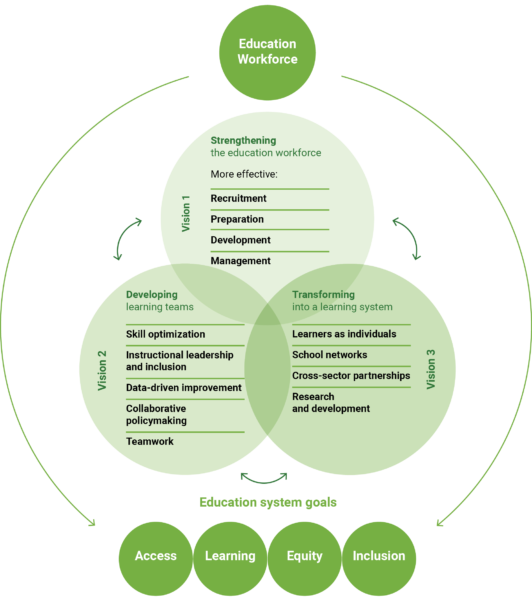
Three intersecting visions for the education workforce to reach system goals
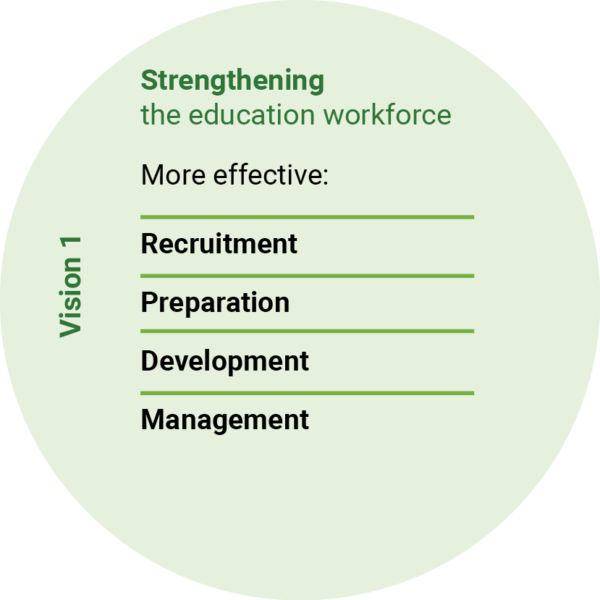
Strengthening the education workforce envisions an effective education workforce at all levels in the system, with coherent approaches to the professionalization of teachers and other key roles throughout the workforce life cycle – from recruitment and preparation to professional development and career progression to workforce leadership and management.

Learning teams collaborate inside the classroom, within schools, within districts, and even at national and international levels. These teams of professionals collectively focus on improving the learning and inclusion of all students and continually learn themselves.

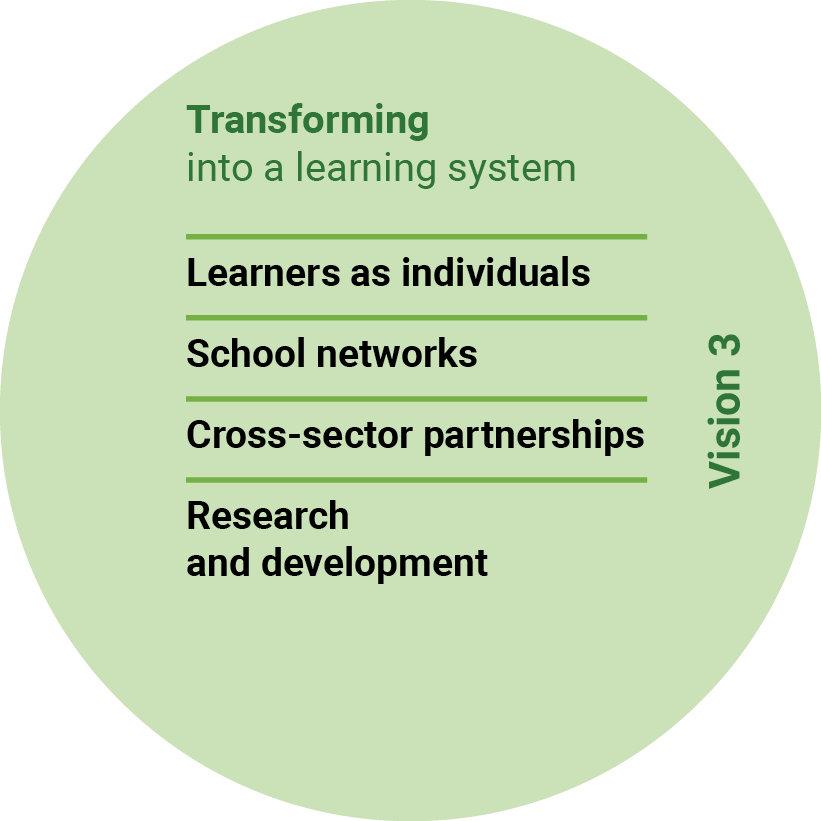
Learning systems harness learning teams, networks of education professionals, cross-sectoral partnerships, data, and evidence to create a system that is coherently organized with a focus on learning and the ability to learn and adapt itself.

This chapter is divided into two key sections. The first section explores navigating the political economy of workforce reforms and provides considerations for and examples of strategies that have been used to address the political economy challenges and opportunities of implementing education workforce reforms. It is structured using the stages of a reform process: initiating and designing reforms; implementing reforms; scaling up and sustaining reforms.
The second section offers considerations around planning, costing, and financing the education workforce, including:
- Existing planning and costing models of the workforce across a range of low- and lower-middle-income countries by assessing how the education workforce is modeled now; identifying where improvements can be made; and highlighting lessons from other sectors.
- Improving workforce investments taking into account economy, efficiency, cost-effectiveness, and equity.
- Financing education workforce reforms, including the role of national governments and the international community.
- An illustrative example of modeling workforce reform
The Education Commission calls on countries to take on the challenge of reforming the education workforce, working with the members of their workforce, national and international organizations, and researchers to test, analyze, scale, and promote reforms that better support the education workforce and young people to learn and work together and build the skills they need to succeed.
This report recommends:
- Develop a workforce diagnostic tool underpinned by reliable data, indicators, and improved costing models to help countries diagnose the challenges and improve the design and management of their workforce.
- Experiment, research, and evaluate to explore what works and at what cost.
- Lead coalitions for change at all levels.
Acknowledgements & Endorsements
The Education Commission is grateful to the many organizations and individuals that have made substantial contributions to this report either directly or through various consultations and discussions. We are particularly thankful for the input of our Education Workforce Initiatve High-Level Steering Group as well as the United Kingdom’s Department for International Development .
Supporting Documents
Background Papers
- Why We Need to Rethink the Education Workforce
- Redesigning the Education Workforce
- Redesigning the Education Workforce: A Design Thinking Approach
- Strengthening the Education Workforce
- Political Economy of the Education Workforce
- Primary Research on the Design of the Education Workforce in Ghana
- Primary Research on the Design of District-Level, School-Facing Roles in Ghana
- Primary Research on the Design of the Education Workforce in Vietnam
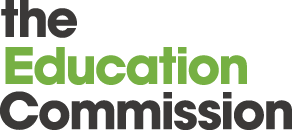
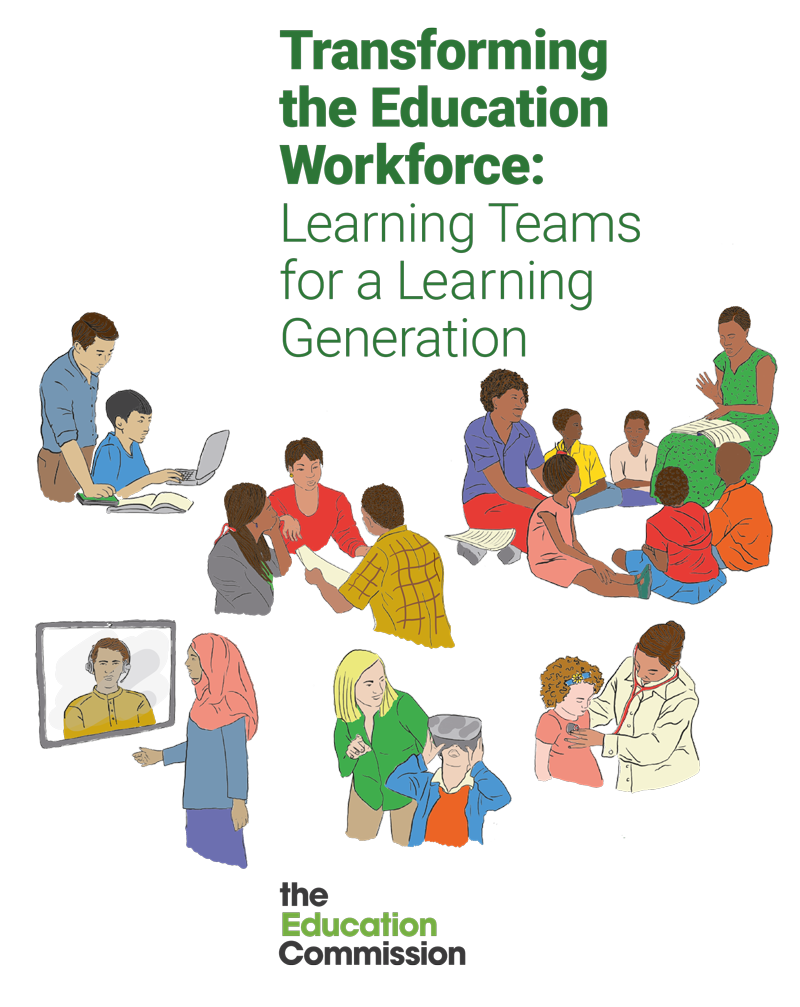

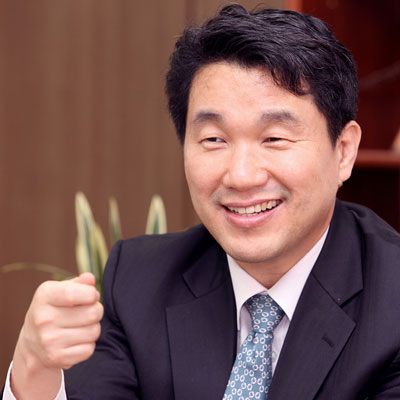
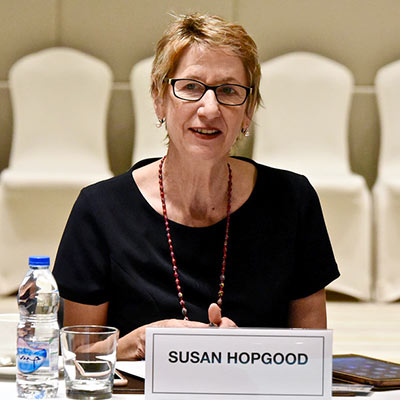
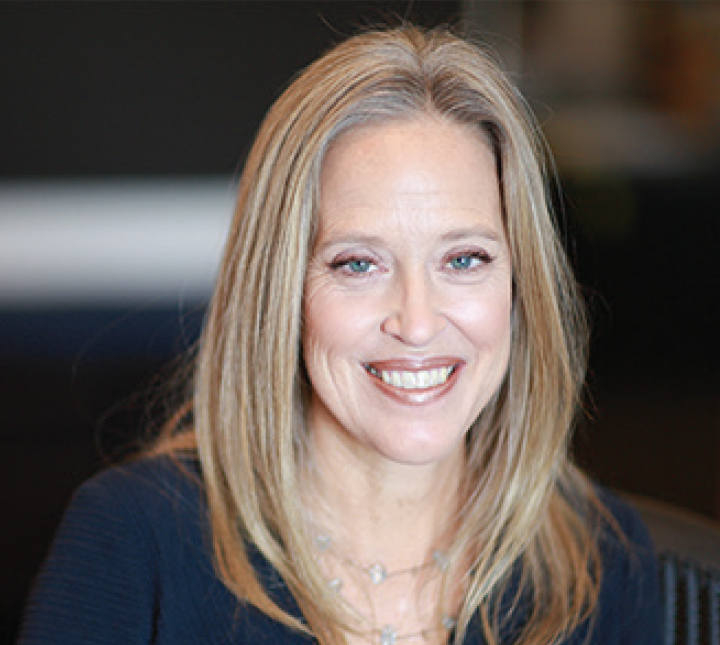
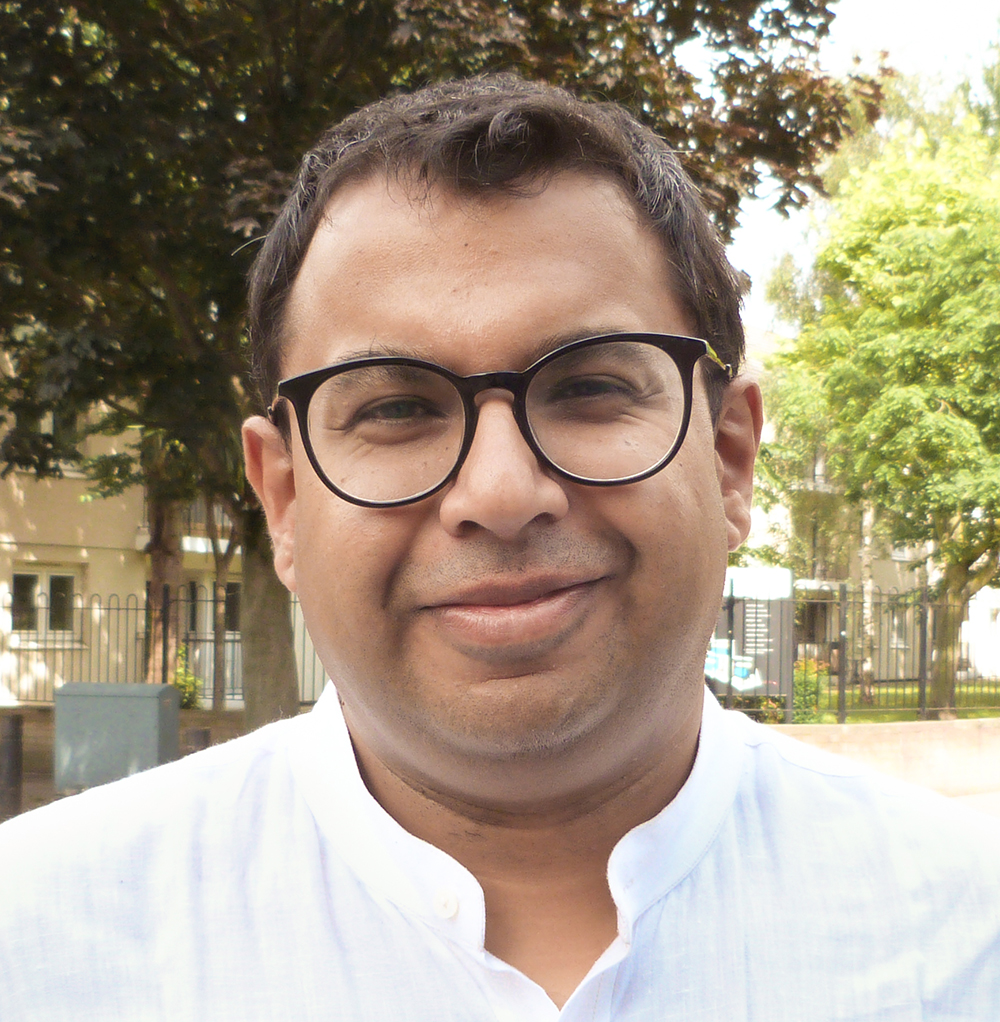




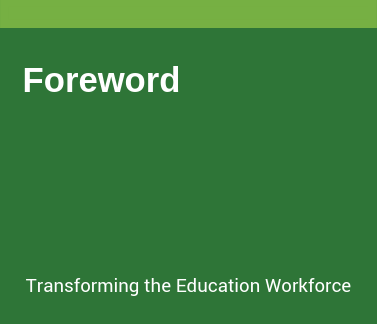
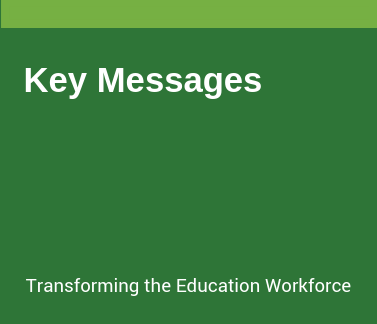
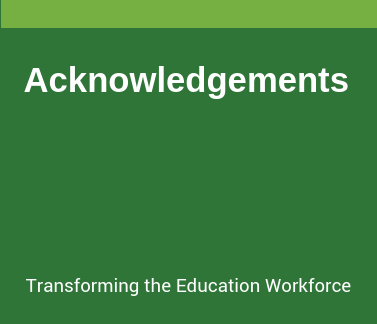
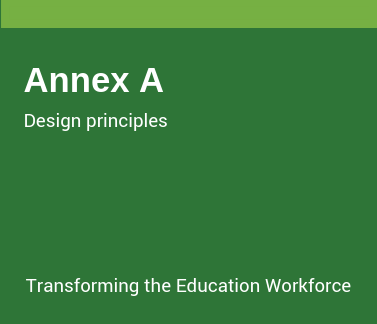
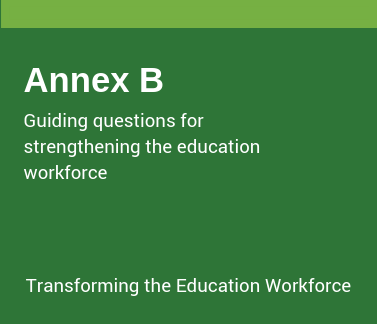
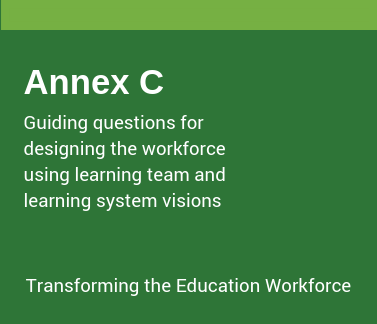
0 Comments